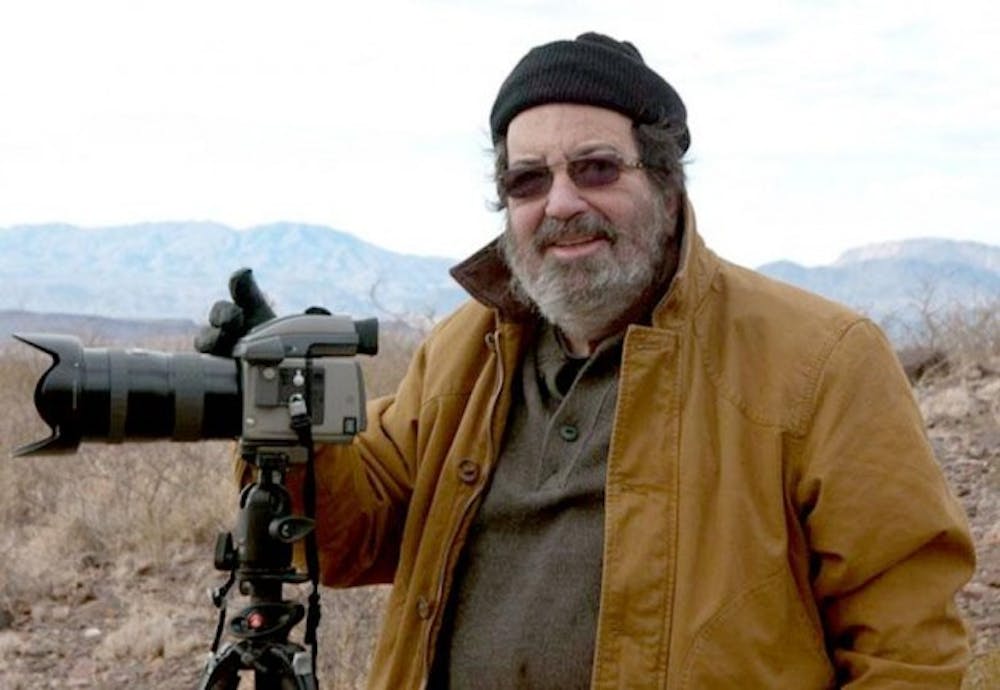The lens of one accomplished photographer has reached across expanses of time and space, capturing the likes of desolate desert landscapes, poverty-stricken rural dwellers and the lives of prisoners on death row.
His name is Bruce Jackson, the James Agee Professor of American Culture and English at UB. Over 350 of Jackson's photographs graced the walls of the Burchfield Penney Art Center in the opening of Being There: Photographs 1962-2012 last Friday evening.
Michael Brown, 48, of Buffalo, is an artist-in-residency at CEPA Gallery and was pleased with Jackson's overall work.
"[Jackson's] very accomplished," Brown said. "He's a really good photographer. His vision is universal."
Jackson's photographic work encompasses a remarkably vast array of topics, time periods, genres and subjects. A walk through the exhibition is filled with images depicting rundown Buffalo buildings, beautiful landscapes, black and white film prints from the '60s and dozens of portrait photographs.
Catherine Dawson, a Ph.D. student in the Department of Visual Studies, appreciated Jackson's range and the versatility in his work.
"The deal with Bruce's work is that his photography spans such a breadth of time and experience," Dawson said. "I don't think any other artist of the 20th century can claim to have done the same."
Jackson's photographs are remarkable not just because of the range of his work but also because he photographs his subjects in great depth. A passionate and piercing eye is what gives Jackson's images their striking appeal.
One of Jackson's most captivating works is entitled "House in Poorbottom," and was taken in rural Kentucky in 1969. The black and white image depicts a destitute mother and her two children sitting in a ramshackle house. The children have dirty complexions and are sitting in front of a wall that is covered with nailed down cardboard pieces, and the mother is seen smoking a cigarette and seemed to be missing teeth. One child faces the viewer with a blank and empty stare.
The image is haunting, but at the same time, it's a beautifully shot photograph. The composition is well executed and the lighting is dramatic. The picture comments on poverty in the rural south in a way that's aesthetic but also chilling.
Jackson's most notable work of a similar vein is his collection of photos grouped under the title "PRISON." The "PRISON" series consists of several black and white images of death row prisoners in Texas and Arkansas prisons. The series is a commentary on the American prison system, its place as a major institution in America and an investigation of the lives of those who inhabit it.
Michael Moses, 75, of Buffalo, felt a personal connection with Jackson's "PRISON" photographs.
"The prison pictures are of particular interest [to me] because I worked at Attica for a period of time," Moses said. "They're very striking and moving. They display the pathos of that sort of experience that people have inside."
Jackson's documentary-like photographs do more than just record prison life, according to the gallery inscription.
His impassioned visualization infuses his photographs with a touch of humanity, portraying them in sympathetic and personal manners.
"Excell White" is a 1979 black and white photograph that illustrates this. The image shows a prisoner standing behind the thick, metal bars of his cell. One of the man's eyes is hidden by one of the metal bars; the other looks at the camera with a serious gaze.
The point of emphasis of the image is a tattoo on the man's chest, which takes the form of a star and has faded lettering beneath it. This mark of identity brings forth questions of the man's past, the meaning of the tattoo and whether it once wrote out the name of a relative or significant other.
But then the thinking stops.
"Put to death March 30, 1999" is written next to the photograph in the description.
Looking at a photograph of a man who has been executed raises hard-to-describe feelings. The emotional reaction to this series of work is a true testament to Jackson's ability to capture moments and individuals that are all at once unsettling and affecting.
All of Jackson's work demonstrates his penetrating vision for images that arrest and intrigue. The vast diversity in his photography illustrates the power of his camera lens and vision to cross and connect boundaries to form such commanding and captivating photographs.
Being There: Photographs 1962-2012will be on view until June 16.
Email: arts@ubspectrum.com





